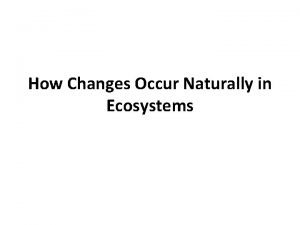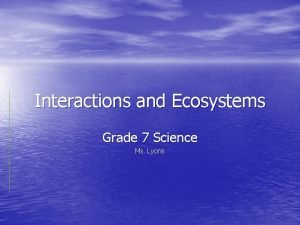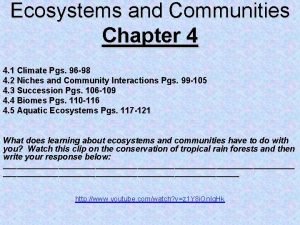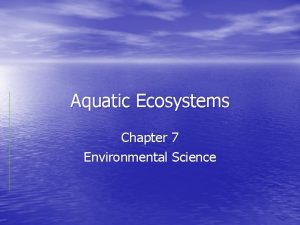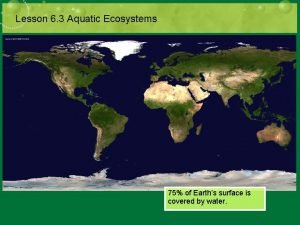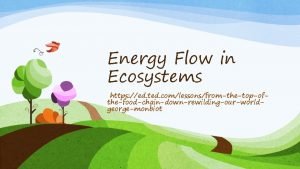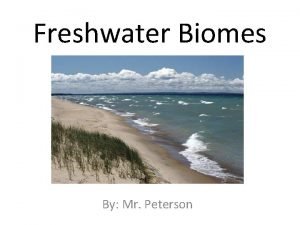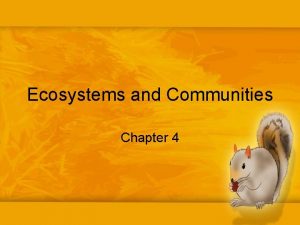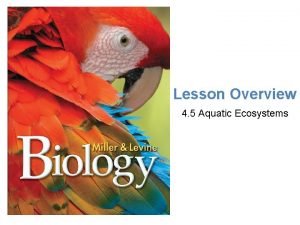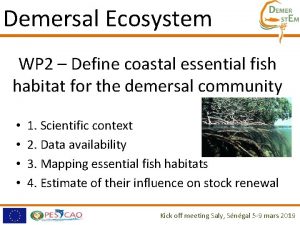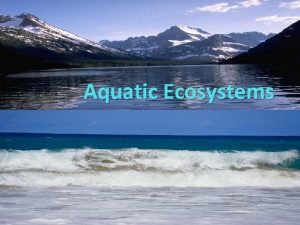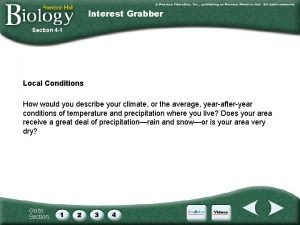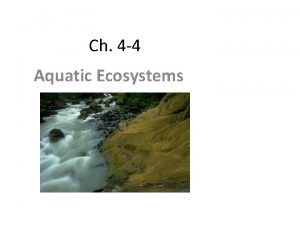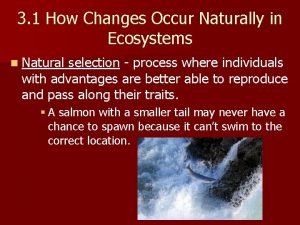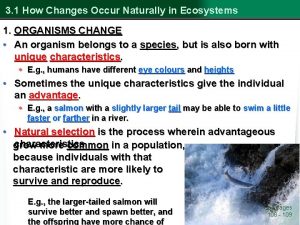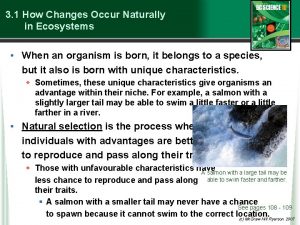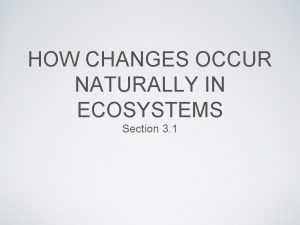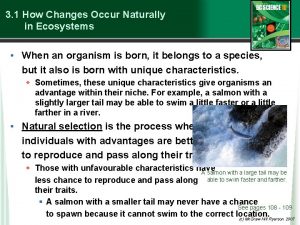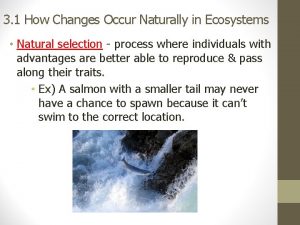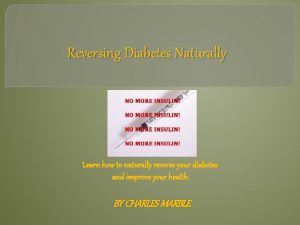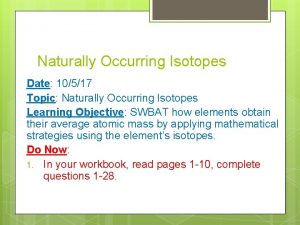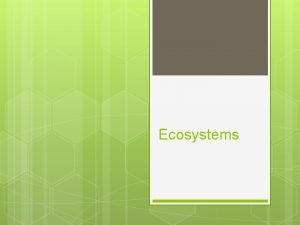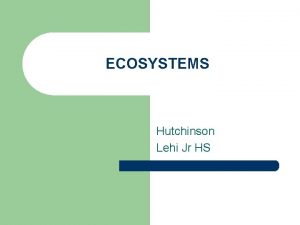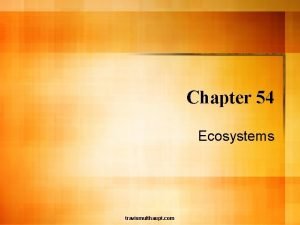3 1 How Changes Occur Naturally in Ecosystems



















- Slides: 19

3. 1 How Changes Occur Naturally in Ecosystems

3. 1 How Changes Occur Naturally in Ecosystems By the end of section 3. 1 you should be able to understand the following: q Over time, and many generations, organisms change along with the biotic and abiotic factors in their environments through the process of natural selection. q In natural selection, the best-adapted members of a species survive, grow strong and reproduce more easily than the rest of that species. q In ecosystems, ecological succession (primary succession and secondary succession) also occurs, as changes tend to favour certain ecological conditions over others as an ecosystem matures.

Always changing …. Abiotic (non-living) and biotic (living) factors can change the conditions of an environment/ ecosystem Animals and plants ADAPT in order to survive in their environments. Let’s look at an example (the 3 -spine stickleback)

Three-Spine Stickleback Originally an ocean-dweller (only lived in salty ocean waters) 13, 000 years ago, the glaciers around BC retreated and some ocean water became lakes (freshwater).

The Sticklebacks in the lake adapted! As the salt water slowly changed to freshwater, the stickleback adapted. Now there are marine and freshwater species. Marine (left) and freshwater (right) guarding nests. . .

Question? ! • Did the stickleback adapt to an abiotic or a biotic change in its environment?

3. 1 How Changes Occur Naturally in Ecosystems Natural selection Species that are best adapted (fittest) will survive and reproduce. “SURVIVAL OF THE FITTEST” Fit doesn’t mean “in shape” but having characteristics that give species an advantage!

Example: The Finches of the Galapagos Islands (off the coast of Ecuador) There are 13 species of finches on the island…

100 Greatest Discoveries: Charles Darwin's Natural Selection

Famous Example Charles Darwin – Galapagos Island Finches 13 species have “radiated out” from one common ancestor. They occupy different niches

All the species are descended from one finch species on the mainland. Each species has unique characteristics that allows them to thrive in their own niche, and not compete with other finches for resources. Adaptive radiation a form of natural selection when many different species appear from one original species.

Natural Changes to Ecosystem Ecological Succession (Changes in the types of organisms over time) Primary Succession Secondary Succession

Life After People ….

1) Steps of Primary Succession Starts with bare rock. Wind carries spores of lichens that can survive on bare rock. Weathering breaks down rock soil begins to form

1) Steps of Primary Succession Pioneer species make/improve soil other plants can grow animals appear form a mature community (stable and change slowly) Pioneer Species are the first organisms to survive and reproduce. Can survive harsh conditions. e. g. Lichens and mosses

“mature” community

2. Secondary Succession: The slow process of plants/ animals inhabiting an area that was DISTURBED but already had soil. Ex. disturbance like a forest fire or clearcut.

Faster than Primary succession (decades to a hundred years) Happens more quickly than primary because soil with nutrients is already present

Natural Disturbances that Might Cause Secondary Succession Ø Flooding Ø Tsunamis Ø Drought Ø Insect Infestations Ø Fire Ø Volcanoes Ø Earthquakes
 What is succession
What is succession Elizabeth mulroney
Elizabeth mulroney Physical change chemistry
Physical change chemistry Grade 7 ecosystems
Grade 7 ecosystems Do birds eat squirrels
Do birds eat squirrels Parasitism examples
Parasitism examples Chapter 7 environmental science
Chapter 7 environmental science Lesson 3: aquatic ecosystems
Lesson 3: aquatic ecosystems Ted ed ecosystems
Ted ed ecosystems Interactions within ecosystems grade 7
Interactions within ecosystems grade 7 Freshwater biomes facts
Freshwater biomes facts Chapter 42 ecosystems and energy
Chapter 42 ecosystems and energy Section 3 aquatic ecosystems worksheet answers
Section 3 aquatic ecosystems worksheet answers Chapter 4 ecosystems and communities
Chapter 4 ecosystems and communities How do ecologists usually classify marine ecosystems?
How do ecologists usually classify marine ecosystems? Demersal ecosystems
Demersal ecosystems Section 1: freshwater ecosystems
Section 1: freshwater ecosystems Section 4-2 what shapes an ecosystem answer key
Section 4-2 what shapes an ecosystem answer key Desert food webs
Desert food webs 4-4 aquatic ecosystems
4-4 aquatic ecosystems
